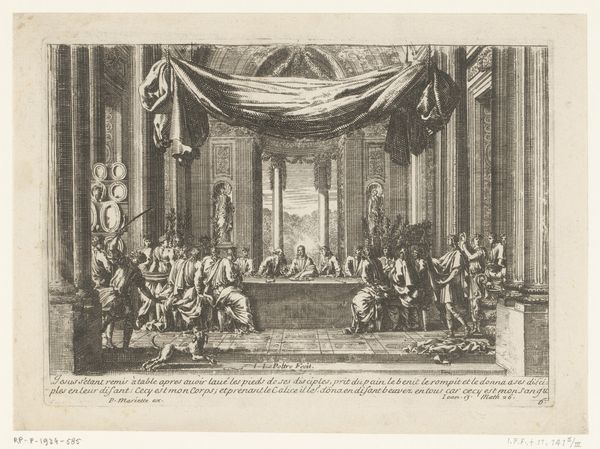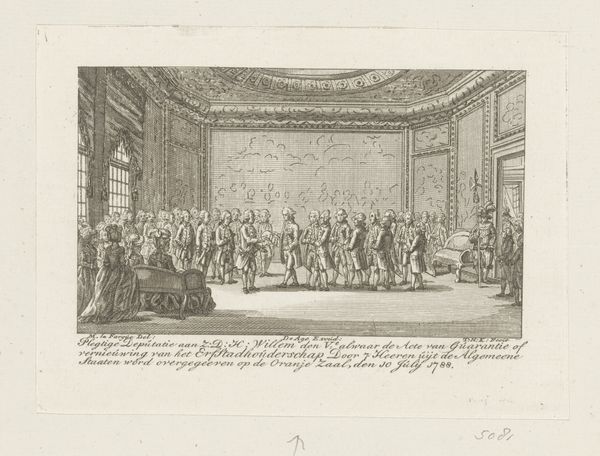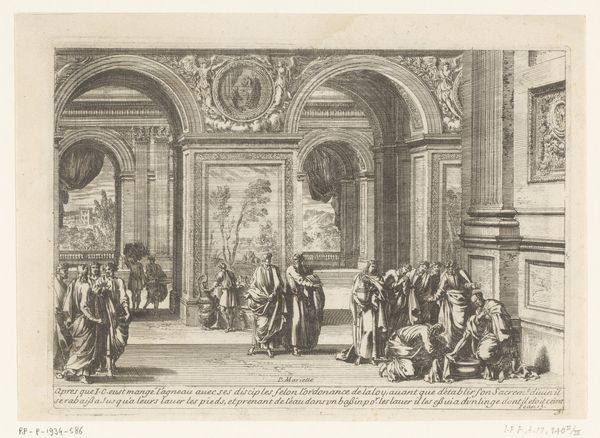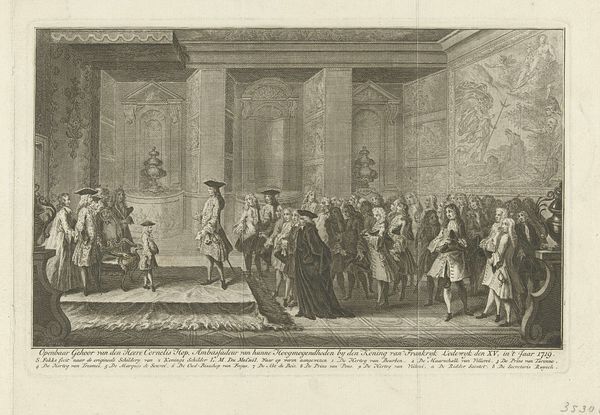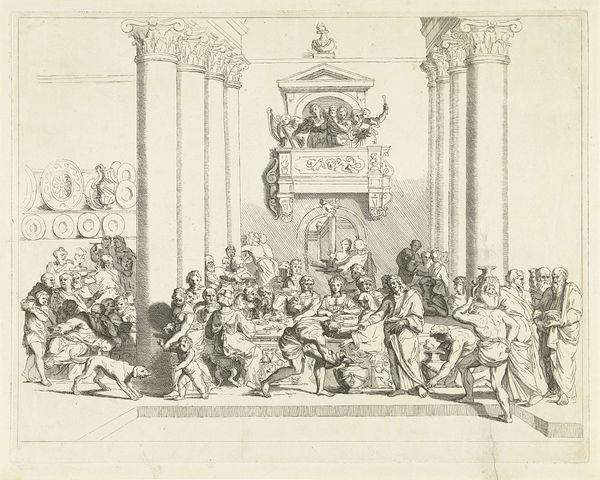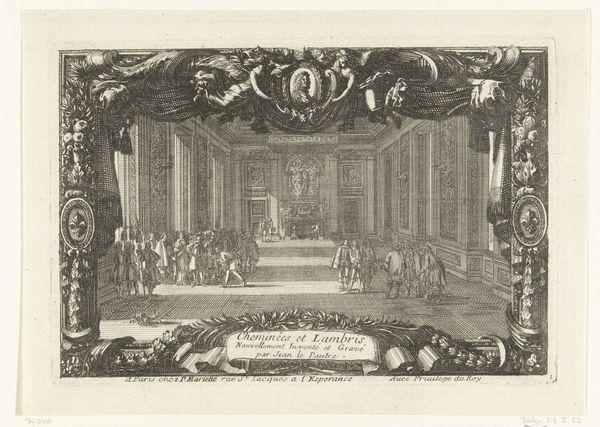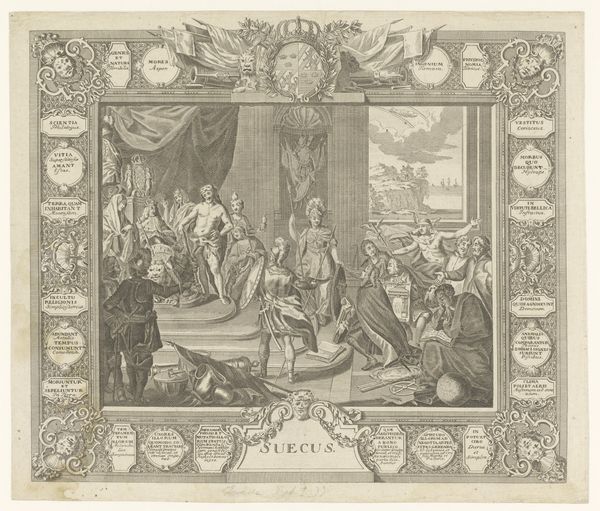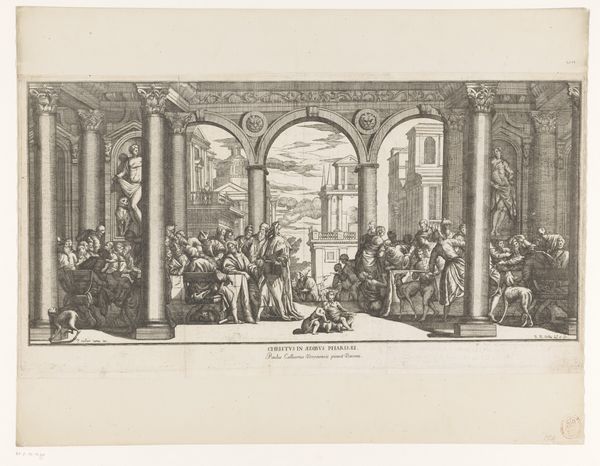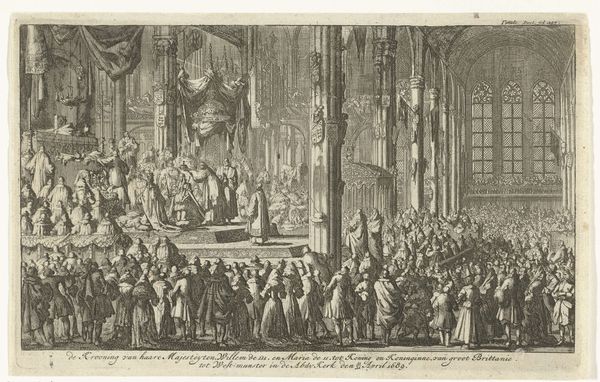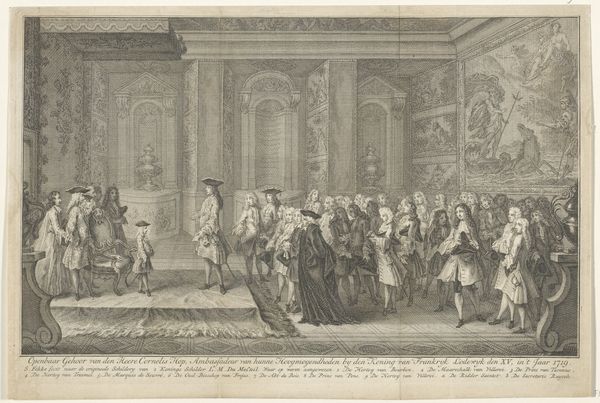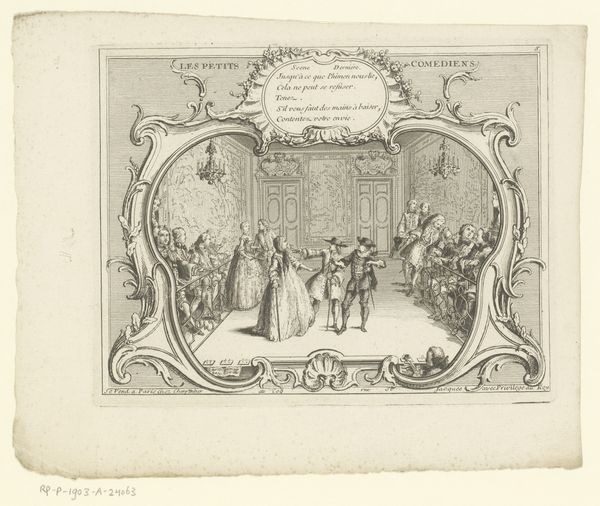
print, etching, engraving
#
portrait
#
baroque
#
pen drawing
#
mechanical pen drawing
# print
#
pen illustration
#
pen sketch
#
etching
#
old engraving style
#
figuration
#
linework heavy
#
line
#
history-painting
#
academic-art
#
engraving
Dimensions: height 100 mm, width 136 mm
Copyright: Rijks Museum: Open Domain
Curator: This intriguing print, an etching to be exact, captures a historical moment, titled "Vignet met een vergadering van ridders van de Saint-Esprit," or "Vignette with a meeting of the Knights of the Holy Spirit" dating back to 1760 and made by Laurent Cars. Editor: Immediately, my eyes are drawn to the meticulous line work. The stark contrast emphasizes the formality of the gathering and enhances the rather severe, yet elegant mood. It's all very crisp and clean, even in its depiction of such an opulent event. Curator: Considering it's a print, it reflects the period's interest in reproducing and disseminating images related to power and authority. Note the ornate frame, too, it really elevates the central subject of the knights and emphasizes a theatrical flair that’s indicative of Baroque sensibilities. It's almost like a stage setting, designed to reinforce the grandeur of the French monarchy. Editor: Indeed, that frame. Beyond mere decoration, it directs the viewer’s focus inwards, compelling attention to the geometric placement of figures within the depicted room. The architecture, along with the positioning of the figures on those bench seats, suggests an ordered social structure. A statement, visually expressed, about hierarchy and governance. Curator: Absolutely. These prints, they were part of a larger industry creating visual propaganda. The sheer volume of detail suggests the immense labour and the material conditions required to produce even a single copy. They had to consider things like the type of inks available at the time, or the specific tools used to create these intricate lines in metal, or, of course, the paper. The artist acts almost as a production manager, coordinating skilled labor towards political messaging. Editor: The engraver's role transcends mere replication; Cars interprets and organizes space and texture using purely linear means to translate something grand into a pocket-sized political dispatch. See the textures; they range from dense groupings of etched lines to suggest shadows and form to the use of almost stippling like techniques on some of the knights' garments. These were ways for Cars to manipulate light and depth perception using a relatively restrictive set of tools. Curator: Right, and consider how it circulated. Was it bound in a book, framed on a wall? This image of courtly authority, intended for distribution to the literate classes, also becomes a commodity in and of itself, further entrenching this vision of divine rule. Editor: Thinking about its effect now… even reduced to this black and white format, it communicates power. A fascinating convergence of process and the art of visual messaging through these skilled engravers. Curator: Yes, absolutely. Thank you for this formal approach, it was rather revealing and I see now beyond its immediate purpose as a reproduction piece.
Comments
No comments
Be the first to comment and join the conversation on the ultimate creative platform.
